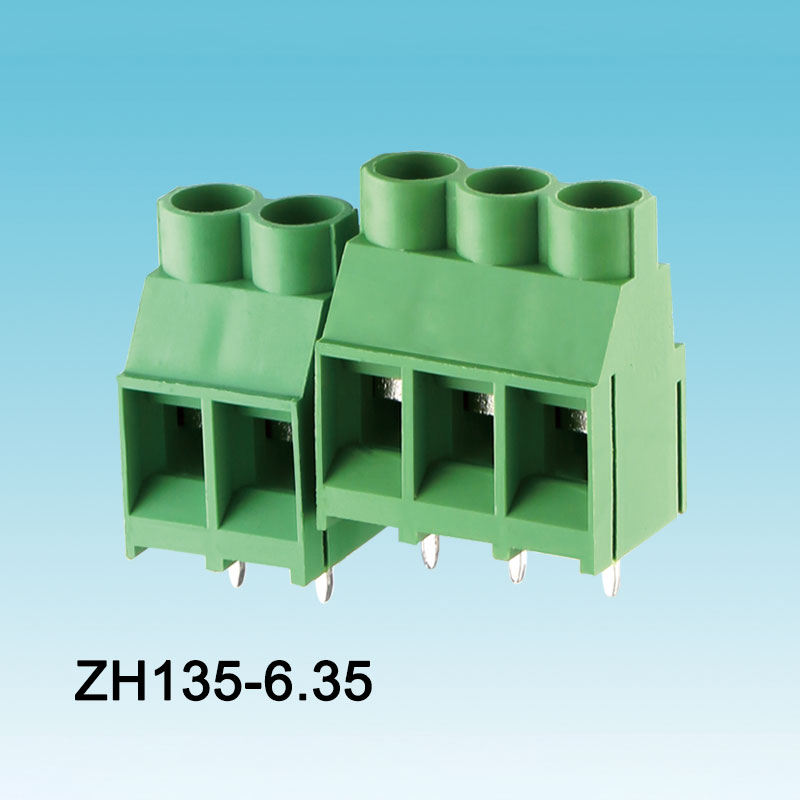What Makes Screw PCB Terminal Blocks a Key Component in Electronics?
2024-12-25
In the world of electronics, reliable connections are crucial for ensuring that circuits operate efficiently and safely. One essential component that often plays a vital role in these connections is the Screw PCB Terminal Block. But what makes this seemingly simple device so important in the design and assembly of electronic systems?
In this blog, we will explore the key features and benefits of Screw PCB Terminal Blocks, the role they play in electronic circuits, and why they are a preferred choice for many engineers and technicians.
What Is a Screw PCB Terminal Block?
A Screw PCB Terminal Block is a type of connector used in electronic and electrical systems to provide a secure and stable connection between a printed circuit board (PCB) and external wires or cables. These blocks consist of a series of terminals that allow for the attachment of wires via screws. The screw mechanism tightens the wire in place, ensuring a solid electrical connection without the need for soldering.
These terminal blocks come in various sizes and configurations, often designed to handle different types of electrical currents and to fit various PCB designs. They can be used in both low-voltage and high-voltage applications, depending on their specific design and material.
Why Are Screw PCB Terminal Blocks So Important?
1. Secure and Reliable Connections
One of the main reasons Screw PCB Terminal Blocks are so widely used is their ability to provide secure and reliable connections. The screw fastening system holds wires firmly in place, minimizing the risk of loose connections, which can lead to electrical failures, overheating, or even fire hazards. Whether you're designing a complex circuit board or building a simple device, these terminal blocks ensure that your connections remain intact under normal operation and physical stress.
2. Easy to Install and Maintain
Screw PCB Terminal Blocks are also appreciated for their ease of installation. The screw mechanism makes it simple to insert wires, and the tight connection ensures the wire stays in place without requiring additional tools or processes like soldering. This ease of installation reduces assembly time and allows for easy replacements or modifications to the circuit if necessary.
Moreover, maintenance is a breeze. If a wire needs to be replaced or if the terminal block needs to be checked, simply loosening the screws allows for quick access to the connection. This makes these blocks particularly useful in industries where regular maintenance and updates to equipment are common.
3. Flexibility in Wiring
Screw PCB Terminal Blocks come in different configurations to accommodate a wide variety of wiring needs. Some blocks can accept single or multiple wires, while others can handle different wire gauges. This flexibility makes them suitable for a wide range of applications, from simple home appliances to complex industrial machinery.
4. High Durability and Longevity
The materials used in the construction of Screw PCB Terminal Blocks, such as thermoplastics and copper alloys, ensure their longevity and resistance to wear and tear. They can withstand high temperatures, vibrations, and environmental factors such as moisture, making them suitable for use in harsh environments.
The solid design of these blocks allows them to endure continuous mechanical stress without breaking down or compromising the electrical connection. This durability is especially crucial in sectors like automotive, industrial, and aerospace, where systems must operate reliably over long periods.
5. Cost-Effective Solution
For many applications, Screw PCB Terminal Blocks provide a cost-effective solution for securing electrical connections. Compared to other types of connectors or wiring methods, screw terminal blocks offer an affordable, versatile, and easy-to-use alternative. Their widespread availability and low cost make them a popular choice for manufacturers and engineers who need to ensure high-quality connections without breaking the budget.
Applications of Screw PCB Terminal Blocks
Screw PCB Terminal Blocks are used across various industries and applications. Some common examples include:
- Automotive Electronics: Used in vehicle control systems to ensure stable and secure connections between different electrical components.
- Industrial Equipment: Found in manufacturing machinery, control panels, and automation systems, where reliable wiring connections are essential.
- Consumer Electronics: Used in power supplies, lighting systems, and other electronic devices for secure wiring connections.
- Renewable Energy: Used in solar and wind energy systems for connecting panels, batteries, and inverters to ensure efficient energy transmission.
What Are the Alternatives to Screw PCB Terminal Blocks?
While screw terminal blocks offer many benefits, there are other types of connectors that might be more suitable for specific applications, such as:
- Spring-loaded Terminal Blocks: These offer a tool-free, quick-connect solution, where wires are held in place by spring tension rather than screws.
- Push-in Terminal Blocks: These allow for easy insertion of wires with minimal effort but may not provide the same level of security as screw connections.
- Soldering: A traditional method that provides a permanent and secure connection but requires more time and precision during assembly.
Conclusion: Why Choose Screw PCB Terminal Blocks?
Screw PCB Terminal Blocks are essential components in many electronic systems because they provide reliable, secure, and easily maintainable connections. Their flexibility, ease of use, and durability make them suitable for a wide range of applications in various industries. Whether you're assembling a complex circuit board or a simple device, choosing a Screw PCB Terminal Block ensures that your connections will remain intact, offering peace of mind for engineers and end-users alike.



